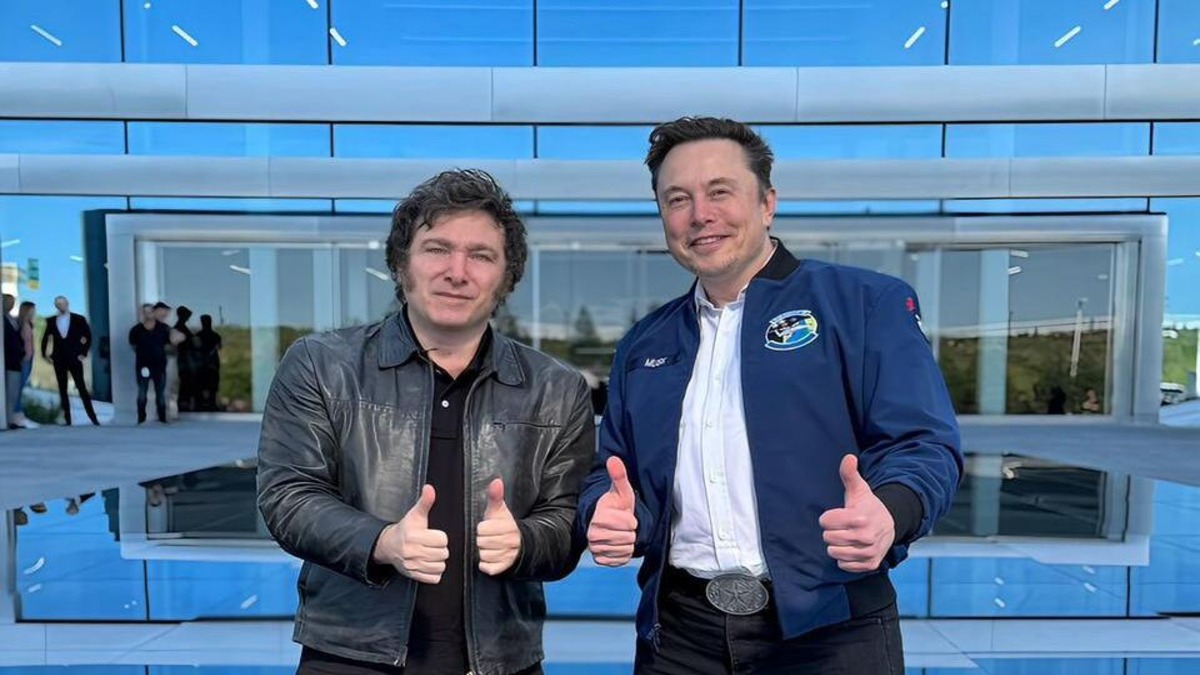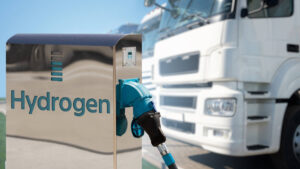>70% of Argentina has not been explored for mining
Argentina’s new President Javier Milei is welcoming foreign investment and making deals with governments and OEMs across the world
Aussie explorers such as Pursuit Minerals and Belararox have already gained footholds in attractive lithium and copper districts
Regulatory changes since Argentina’s new President Javier Milei came into office last year and implemented his “Shock Therapy” decrees are a boon for the country’s mining sector, and with foreign money more welcome than ever before, the well-established yet underexplored copper and lithium industries in the country are tipped for major growth.
Free market promoter Milei has presided over the country’s first quarterly budget surplus in 16 years to the tune of US$309m – the first since the global financial crisis – on the back of implementing his controversial “shock therapy” economic changes after taking office.
An Argentine Institute of Fiscal Analysis (IARAF) report in April said that it was national public expenditure that took the hit to make this happen, dropping by 8.3 trillion pesos (US$9.37bn) in Q1 2023.
It also showed that nearly all discretionary transfers to Argentina’s provincial governments had been eliminated – cited by Milei as conduits for corruption; and almost all public projects that had no international funding were halted too.
IMF support
These measures may seem harsh, yet the International Monetary Fund (IMF) has just backed up the fiscal moves so far, agreeing to a US$792m payment to the US$43bn-indebted country as part of a disbursement to encourage efforts along.
The IMF said on Monday that the Latin American country has made “faster-than-anticipated progress in restoring macroeconomic stability”.
“Notable results include the first quarterly fiscal surplus in 16 years” and “rapidly falling inflation, a turnaround in international reserves, and sovereign spreads near multi-year lows”.
So what’s he doing for the mining sector?
Well, he’s definitely riding a wave of populism. They even call him South America’s Trump, something which he plays into, once seen wearing Argentina’s version of his red ‘Make America Great Again’ (MAGA) hat on the road towards him being elected to the top job.
Whatever your thoughts of his antics, his efforts to turn around stagflation are working and promoting Argentina’s mining sector is one of his parties’ key policies.
The President has also been on a bit of a roadshow recently representing Argentina. He even met with Elon Musk at his Tesla factory in Texas, who subsequently endorsed the nation as a lucrative place for investment through his social media platform X.
I recommend investing in Argentina https://t.co/DIrcf8TsLN
— Elon Musk (@elonmusk) May 7, 2024
Tesla itself has not been shy about its ambition to diversify supplies of copper and lithium. As of August last year, it relied on China for 40% of battery-related materials.
Milei is on a deal-making heater when it comes to proffering Argentina’s wealth of copper, gold, lithium and other critical minerals as he seeks to bolster the nation’s ties with the West.
He’s recently signed strategic minerals partnerships with the US, India, Germany and the UAE and has further cemented bilateral trade treaties with Australia, China, the US and South Africa.
Privatisation and changes to mining investment
Since coming to power Milei has been pushing privatisation hard, opening up the country’s mining and energy sectors to foreign money to help fight long out-of-control inflation.
Now, the once near-impossible to invest in country for foreign explorers and developers has flipped into a welcoming supply haven of critical minerals.
The new Argentine government has introduced a specific Mining Investment Law that includes a 30-year fiscal stability period and other benefits at each stage of project development.
Key regulations in Argentina’s Mining Investment Law #24.196. Source: Ministerio de Economia Argentina
This is complemented by the Foreign Investment Law – granting equal treatment to foreign and domestic investors.
Speaking to someone with his company’s boots on Argentina’s fertile ground, Stockhead picked the brain of lithium-focused Pursuit Minerals’ (ASX:PUR) MD Aaron Revelle who says the economic changes since Milei has come into power are astonishingly attractive for mining.
“Looking at Argentina now and it’s a very different country to what it was under the Fernández government and we’re seeing now a very positive view of the country as a whole,” Revelle says.
“They’ve tapered down high inflation, delivered the first budget surplus for a quarter since the global financial crisis in 2008.
“For the junior sector, Milei has taken measures to really address the country’s chronic instability and it’s becoming cheaper and easier to operate in Argentina… if you look at the pipeline of projects and how the Federal and Provincial governments are tackling the mining sector.
“From the Federal level, Milei is looking at foreign investment support; and then you can see the effects of the Macri reign (Argentina’s President from 2015-19) where a lot of the finance ministers stem from in terms of provincial economy and job creation, so you have this very positive business economy to work with.
“Foreign investors are coming to bet on Argentina.”
Pursuit is developing its Rio Grande Sur project in the Salta province and is currently targeting a resource upgrade this quarter to build on an inferred resource which currently sits at 251,300t LCE.
“We are also in the process of completing commissioning at our lithium carbonate Stage 1 plant which has a 250t capacity, so we’ll be looking to bring that plant online and start producing lithium before the end of this year,” Revelle says.
Argentina’s newly appointed mining secretary Luis Lucero echoes Revelle’s confidence in the continued resurgence of the sector, carried on the back of international investment.
“It’s our job not to waste this opportunity,” Lucero says.
In further defence of amendments to the country’s mining regulations, Lucero says “we must analyse our rules and decisions by weighing up their economic effects, especially when they involve foregoing economic resources and jobs”.
The changes will incentivise exploration of >70% of Argentina’s unexplored territory and conservatively, with its copper, gold and lithium potential, will export upwards of US$27 billion by 2034 – more than 6x the US$4 billion of mining exports reported for 2023.
Source: Ministerio de Economia Argentina. (denominations in USD)
It’s a big ‘ol world out there, so why is everyone scrambling to secure access to Argentina’s commodity wealth?
Well, there’s demand for one. Both lithium and copper are forecast to be in short supply in the medium-long term and the South American nation is known to have an abundance of high-grade, easily extractable sources of both. Lithium from brine salt pans and copper in vast, easily extractable, mainly porphyry deposits.
Couple that with a move away from a reliance on China as governments and OEMs in the West pivot to new “paddock to plate” downstream supply chains of commodities through to manufactured goods. Let’s see which brave foreign companies are in-country setting out to pasture.
Developments in the Lithium Triangle
South Korean steel giant POSCO is expected to start Phase 1 production of 22,000tpa lithium carbonate equivalent (LCE) from its Sal de Oro operation in the Salar del Hombre Muerto salt pan next year.
POSCO seems happy to be operating in Argentina, as it just secured a US$668m loan to develop Phase 2, which will see output rise to 90,000tpa.
It’s also in a 50:50 JV with Lithium South to develop the Hombre Muerto North project which is contiguous to the US$4 billion Sal de Oro.
Arcadium Lithium’s (ASX:LTM) established El Fenix and Sal de Vida operations are also in the vicinity; so is UAE-based United Mining Projects Corporation (UMPC) which has announced through its subsidiary Marhen Lithium, a US$550m four-year investment at the Rio Grande Sur salar in Argentina’s Catamarca province.
As is junior Galan Lithium (ASX:GLN) with its the Hombre Muerto West brine project that has nearly four brine ponds filled to extract its Phase 1 nameplate capacity of 5400tpa LCE.
That’s part of a four-phase development which, when completed, will output 60,000tpa LCE.
The sea change in Argentina’s approach to foreign investment is clearly evident with Galan, with the company signing a landmark commercialisation agreement with the Catamarca provincial government to allow the sale of LCE concentrate to both domestic and international customers.
Then there’s Power Minerals (ASX:PNN) Salta project which consists of five salars (salt flats), focusing on its Rincon Salar, abutting Rio Tinto’s same name project, as well as its Incashausi tenements.
Copper Valley awakens once more
Argentina’s long-dormant copper industry is coming online once more as prices of the red metal shoot up past US$10,800/t.
Earlier this year automaker group Stellantis announced a US$155m investment into the Los Azules copper project in Argentina, which Rio Tinto is also buying into.
Aussie junior Belararox (ASX:BRX) has been pushing into Argentina over the past year – and they’ve been doing it the hard way – long before Milei was elected and mining regulations for foreign investment started to be further relaxed late last year.
Seeing the potential of the region early, Belararox is potentially ahead of an incoming swarm of companies with its footprint already firmly in-country.
The explorer has 12 highly prospective copper targets across its Toro-Malambo-Tambo (TMT) copper project in San Juan province and is at the rock chip sampling stage ahead of a maiden drill program.
Early doors exploration has discovered indications of another porphyry-style mineralisation at its Malambo target, meaning all three zones of interest – Toro, Malambo and Toro – all have identified porphyry potential.
What does that mean? Well, porphyry deposits are massive, often economic from copper concentrations as low as 0.15% with by-products such as molybdenum, silver, and gold.
Notably, the TMT project is next door to Filo Mining Corp’s C$3.3bn 644Mt Filo Del Sol mine backed by BHP (ASX:BHP), as well as the Los Helados and Potro Cliffs projects being developed by TSE-listed NGEx Minerals.
US miner Golden Minerals sees opportunities in Argentina too.
It recently announced the divestment of its Mexican assets to accelerate exploration and development around its El Quevar silver mine and pursue a farm-in option to acquire 51% of the Sarita Este early-stage gold-silver-copper project.
While not quite copper-focused, Challenger Gold (ASX:CEL) is also making headway in Argentina at its >$US$1bn 2.8Moz Hualilan gold-silver-zinc project, where some recent metallurgical wizardry tripled the deposit’s contained zinc recovery up to 211,500t compared to a scoping study which had pegged recoveries at just 62,000t.
At Stockhead, we tell it like it is. While Galan Lithium, Pursuit Minerals, Challenger Gold and Belararox are Stockhead advertisers, they did not sponsor this article.
The post Elon Musk says invest into Argentina. With its wealth of untapped minerals, here’s why he’s probably right appeared first on Stockhead.






















